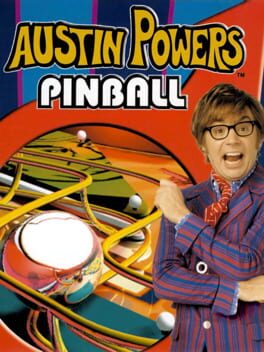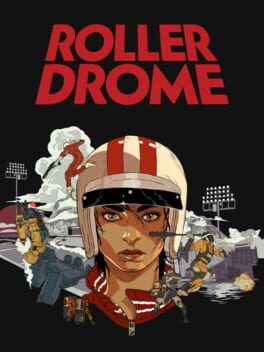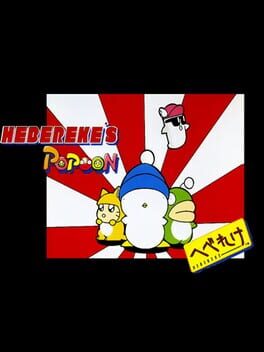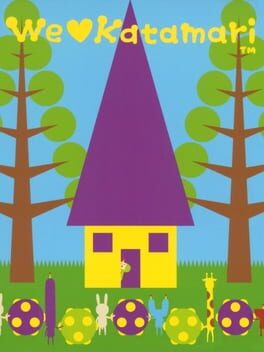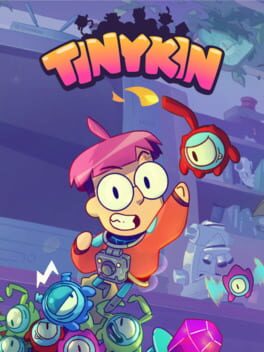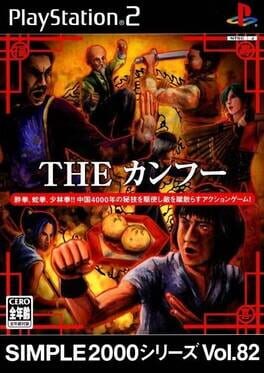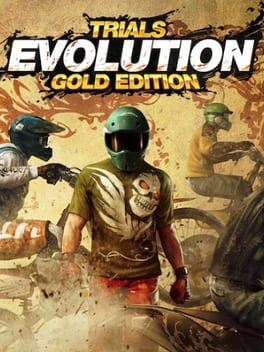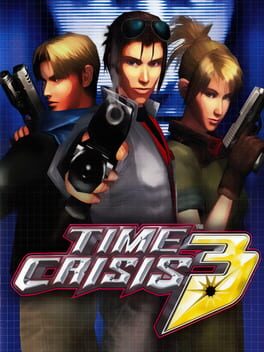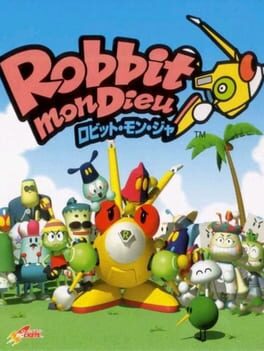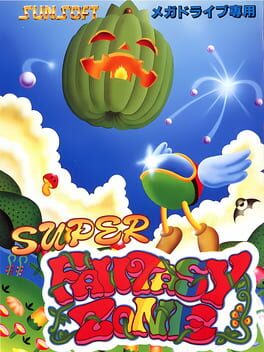2005
The best games aren't the flawless, slick-as-all-get-out games. They're the ones that have very unique appeal. An itch you can't scratch with anything else. That's why Chibi-Robo fans are such a rare breed.
Chibi-Robo has similarities to a lot of other games, but there's nothing else with its blend. It's a game that revels in repetition and limiting your agency. As soon as Chibi-Robo enters the Sandersons' home, he's a source of resentment. Another expensive gizmo that the childish, impulsive father can't afford. Slowly, by accomplishing little tasks, and helping out with housework, Chibi-Robo becomes welcomed, appreciated and eventually, the subject of intense gratitude as he helps fix the family's problems. The more Chibi-Robo does, the more he has access to.
I'd be deeply suspicious of a game that attempted a similar story arc these days. I know it would be either cloyingly mawkish or shallow and insincere. Chibi-Robo, on the other hand, is dumb, dated and disarmingly weird. Toys come to life at night, and there's something off about all of them. The first you meet is some kind of Buzz Lightyear knock-off, but because of the unique balance of surrounding cultural influences where and when the game was made, he's more Kamen Rider than Buck Rogers, and the localisation team aren't equipped to make sense of that for a western audience. It's just another weird thing in this weird game, and you accept it. There's a load of stuff like that in Chibi-Robo, and it's a big part of its appeal. I don't want to spoil the stupidest plot twists the game has to offer, but there's stuff in here that I couldn't fucking believe.
The appeal of what I refer to as "wee guy" games is very much here, though it's probably easy to overstate in something like Chibi-Robo. You're running around a big house, trying to find hidden pathways and ascend to the highest points. In retrospect, it kind of feels like an N64 platformer with iffy level design. There's typically only one or two routes up through each room's furniture, and the paths aren't always terribly intuitive or readable. There's parts where you'll need to attempt a gap multiple times, finagling the camera into an awkward position and having to retread about three minutes of shelf traversal each time it doesn't work. To players of a certain age though, there's a kind of comfort to this. This is how punishing games are supposed to be. There's an honesty to each fall, and with the domestic settings, the moving platforms and obstacles are thankfully rare. It's like those throwback bags of Opal Fruits you can buy - I don't know if the old approach is better, but it's what you want sometimes.
It goes without saying that Chibi-Robo isn't for everyone. It's a lumpy, stupid game where you can't do anything that you want and you get sent back to the starting point every five to fifteen minutes. Only those of very cultivated tastes will find it charming. It's completely indespensible to me though. I've never played another game does what it does the way it does. I hope I never stop coming back to it.
Chibi-Robo has similarities to a lot of other games, but there's nothing else with its blend. It's a game that revels in repetition and limiting your agency. As soon as Chibi-Robo enters the Sandersons' home, he's a source of resentment. Another expensive gizmo that the childish, impulsive father can't afford. Slowly, by accomplishing little tasks, and helping out with housework, Chibi-Robo becomes welcomed, appreciated and eventually, the subject of intense gratitude as he helps fix the family's problems. The more Chibi-Robo does, the more he has access to.
I'd be deeply suspicious of a game that attempted a similar story arc these days. I know it would be either cloyingly mawkish or shallow and insincere. Chibi-Robo, on the other hand, is dumb, dated and disarmingly weird. Toys come to life at night, and there's something off about all of them. The first you meet is some kind of Buzz Lightyear knock-off, but because of the unique balance of surrounding cultural influences where and when the game was made, he's more Kamen Rider than Buck Rogers, and the localisation team aren't equipped to make sense of that for a western audience. It's just another weird thing in this weird game, and you accept it. There's a load of stuff like that in Chibi-Robo, and it's a big part of its appeal. I don't want to spoil the stupidest plot twists the game has to offer, but there's stuff in here that I couldn't fucking believe.
The appeal of what I refer to as "wee guy" games is very much here, though it's probably easy to overstate in something like Chibi-Robo. You're running around a big house, trying to find hidden pathways and ascend to the highest points. In retrospect, it kind of feels like an N64 platformer with iffy level design. There's typically only one or two routes up through each room's furniture, and the paths aren't always terribly intuitive or readable. There's parts where you'll need to attempt a gap multiple times, finagling the camera into an awkward position and having to retread about three minutes of shelf traversal each time it doesn't work. To players of a certain age though, there's a kind of comfort to this. This is how punishing games are supposed to be. There's an honesty to each fall, and with the domestic settings, the moving platforms and obstacles are thankfully rare. It's like those throwback bags of Opal Fruits you can buy - I don't know if the old approach is better, but it's what you want sometimes.
It goes without saying that Chibi-Robo isn't for everyone. It's a lumpy, stupid game where you can't do anything that you want and you get sent back to the starting point every five to fifteen minutes. Only those of very cultivated tastes will find it charming. It's completely indespensible to me though. I've never played another game does what it does the way it does. I hope I never stop coming back to it.
Austin Powers Pinball features two tables. International Man of Mystery and The Spy Who Shagged Me. I remember watching an interview for Austin Powers 2 in a little Sky Interactive window about a hundred times. I would have been about 12 or 13 and very insecure about puberty. Hearing that Austin had lost his "Mojo" had me looking up the word in the dictionary, which told me it meant something like "sexual prowess". I didn't really understand and assumed the film was about Austin Powers being castrated against his will. I still have not seen Austin Powers 2.
When you first play Austin Powers Pinball, you will attempt to figure out which buttons are used to control the flippers. Pressing anything other than the correct ones will warn you that you have "tilted" the board and will lock you out of playing until your ball falls down the hole.
If you register your copy of Austin Powers Pinball with Take 2 Interactive, you will be entered into their free prize draw to win £100. Imagine what you'd spend that on!
When you first play Austin Powers Pinball, you will attempt to figure out which buttons are used to control the flippers. Pressing anything other than the correct ones will warn you that you have "tilted" the board and will lock you out of playing until your ball falls down the hole.
If you register your copy of Austin Powers Pinball with Take 2 Interactive, you will be entered into their free prize draw to win £100. Imagine what you'd spend that on!
1998
The purchase of the Japanese Metal Gear Solid Premium Package inspired a lot of thoughts regarding how much I love the game, so I thought I'd write some of it down while I'm feeling like this.
Metal Gear Solid One is the main thing I like. A great deal of things that I like, I like because they're a bit like MGS1. It's the most sincere reflection on genetic inherentance, the disparity between nature and technology, and the state of global conflict in the 21st century, all wrapped up in a deeply earnest videogame with big muscley baddies who shoot you with a tank and laugh. It's the pinacle of early 3D action game design, fully reflective of the decades of fun, lovable game design that came before it. It's 90s anime and late 80s action films. At any point in the game you can call one contact to tell you about the flora and fauna of Alaska and another to tell you about international attitudes towards the use of nuclear weapons. It's the perfect thing for me to like.
I love how rigidly and logically it plays too. Literal cones of vision that you have to slip between, button inputs that always serve one function, and great big surfaces that all sit on 45 degree alignments. It's Solid. That's satisfaction. That's what I like.
I love the romance and coldness of MGS1. Dirty metal walls, corroded by gunpowder, sitting within pure thick white mist. It's people who have only known to fight learning that the value of living is found in love. It's so achingly earnest about that. You either have to be cool and dismiss it or just spend the rest of your life bathing in the beauty of METAL GEAR SOLID for the SONY PLAYSTATION.
I could mention any tiny piece of minutia regarding MGS1 and wax lyrical about why I love that stupid wee thing, but it's just every part of it. I love Level 5 PAN cards and the sound effect when you scroll through your inventory and Alaskan field mice and the Colt Single Action Army - the greatest handgun ever made - and the Super Baby Method and the big industrial freight elevators that descend diagonally. Metal Gear Solid is why I'm like this.
Metal Gear Solid One is the main thing I like. A great deal of things that I like, I like because they're a bit like MGS1. It's the most sincere reflection on genetic inherentance, the disparity between nature and technology, and the state of global conflict in the 21st century, all wrapped up in a deeply earnest videogame with big muscley baddies who shoot you with a tank and laugh. It's the pinacle of early 3D action game design, fully reflective of the decades of fun, lovable game design that came before it. It's 90s anime and late 80s action films. At any point in the game you can call one contact to tell you about the flora and fauna of Alaska and another to tell you about international attitudes towards the use of nuclear weapons. It's the perfect thing for me to like.
I love how rigidly and logically it plays too. Literal cones of vision that you have to slip between, button inputs that always serve one function, and great big surfaces that all sit on 45 degree alignments. It's Solid. That's satisfaction. That's what I like.
I love the romance and coldness of MGS1. Dirty metal walls, corroded by gunpowder, sitting within pure thick white mist. It's people who have only known to fight learning that the value of living is found in love. It's so achingly earnest about that. You either have to be cool and dismiss it or just spend the rest of your life bathing in the beauty of METAL GEAR SOLID for the SONY PLAYSTATION.
I could mention any tiny piece of minutia regarding MGS1 and wax lyrical about why I love that stupid wee thing, but it's just every part of it. I love Level 5 PAN cards and the sound effect when you scroll through your inventory and Alaskan field mice and the Colt Single Action Army - the greatest handgun ever made - and the Super Baby Method and the big industrial freight elevators that descend diagonally. Metal Gear Solid is why I'm like this.
2022
One of the greatest compliments I can pay Rollerdrome is that it feels like a game from twenty years ago. You know, when they made stuff like SSX Tricky and Quake III and Tony Hawk's 2. Infinitely replayable, unique games with no real skill ceiling. You can get really good at this, and every new hurdle you get over feels great.
It's a rollerskating arena shooter. This could have gone badly wrong, but everything's well considered. Your movement is largely based on momentum, while you aim in all directions around you. If you need to take a sharp turn, you can use the same dodge roll you use to evade rockets and sniper fire. All the enemy types are instantly readable, with their own attack patterns and weaknesses. You're constantly balancing distance, quick kills and major threats, looking after your health and combos. Get good enough and the THPS stuff becomes second-nature. It starts to feel like Geometry Wars. Just one where you can throw grenades at fuchikomas while backflipping.
The aesthetic's pretty cool too. Like a very specific branch of early 80s sci-fi. Not like those ironic American parody throwbacks. It feels part of the scene.
Rollerdrome is very difficult, and it plays entirely by its own rules. Familiarity with Tony Hawk's (or better yet, Aggressive Inline) will definitely help you out, but there's a lot to take on board and practice until it's second-nature. The game's structured so you have to get better than you think you can be before it lets you onto the next set of levels. You can kind of flub your way through a lot of the early stuff, but you feel each new level of competence you gain, and it's exhilarating.
Do not pass this one up.
It's a rollerskating arena shooter. This could have gone badly wrong, but everything's well considered. Your movement is largely based on momentum, while you aim in all directions around you. If you need to take a sharp turn, you can use the same dodge roll you use to evade rockets and sniper fire. All the enemy types are instantly readable, with their own attack patterns and weaknesses. You're constantly balancing distance, quick kills and major threats, looking after your health and combos. Get good enough and the THPS stuff becomes second-nature. It starts to feel like Geometry Wars. Just one where you can throw grenades at fuchikomas while backflipping.
The aesthetic's pretty cool too. Like a very specific branch of early 80s sci-fi. Not like those ironic American parody throwbacks. It feels part of the scene.
Rollerdrome is very difficult, and it plays entirely by its own rules. Familiarity with Tony Hawk's (or better yet, Aggressive Inline) will definitely help you out, but there's a lot to take on board and practice until it's second-nature. The game's structured so you have to get better than you think you can be before it lets you onto the next set of levels. You can kind of flub your way through a lot of the early stuff, but you feel each new level of competence you gain, and it's exhilarating.
Do not pass this one up.
1995
1993
A puzzle game for fans of garbage blocks. It's like Puyo Puyo, but the garbage blocks are falling constantly at an overwhelming rate. They're all coloured blocks though, and if they fall next to a block of the same colour, they'll both disappear. This adds a wildcard dynamic to them as you're trying to line-up combos, and seeing crucial sections of your construction disappearing or getting buried. I think you have to be a pretty big Puyo Puyo player to get a lot out of this, as it's a much more aggrivating twist on its formula.
Having lived with a hoarder, I found the game paradoxically traumatic and cathartic, digging through these piles of shit being thrown my way. You're just throwing crap at each other until one of you dies. Toxic as fuck. Good though.
Having lived with a hoarder, I found the game paradoxically traumatic and cathartic, digging through these piles of shit being thrown my way. You're just throwing crap at each other until one of you dies. Toxic as fuck. Good though.
2005
It's always been a bit of a shame that this was the first Katamari game we got in Europe. We didn't even know if we loved Katamari when we bought it. There's few gaming sequels as heavily predicated on the player's familiarity with the original game. It's practically a fan disc.
The game's setting regards everyone loving Katamari Damacy and The King of All Cosmos gaining a huge ego about it. The levels are sillier, and frequently, more gimmicky than those in the original game. There's a couple daft new renditions of Katamari on the Rocks, with a wild acapella arrangement and one sung by animals, but I really just wanted the original back then.
All this time later, after playing the NTSC/J original, practically every sequel, and the REROLL remaster, We Love Katamari makes perfect sense. We do love Katamari. We're ready for it now.
I don't think it's quite as good as Katamari Damacy, despite the quality of life tweaks and a more varied set of levels. I think it's a bit more hit or miss. There's some levels that are a bit of a struggle to have much fun with. There's a couple that are basically just dumb jokes (the Cow/Bear-themed level doesn't make as much sense to English-speaking players as the Uma/Kuma one would have made to the Japanese audience), and they break up the flow amusingly, but they're a bit of a pill if they're a substantial portion of the Katamari content you have access to. The soundtrack sometimes approaches the heights of Katamari Damacy's, but they feel like b-sides to the original's world-blazing chart toppers.
Likely the best thing about We Love Katamari is how much fun they've had setting up little scenarios with the animals, vegetables and minerals scattered around the levels. A pirouetting ballerina leading a parade of swans. Armed policemen who immediately start firing at you when you approach. Elephants spinning around on top of giant mushrooms. We Love Katamari is very funny.
Keita Takahashi was making a lot of noise about the similarities between Wattam and Death Stranding's themes when they were both coming out, but really, most of his games seem to be about that. Appreciating all aspects of the world and connecting them together. From paper airplanes and towers of AA batteries to oil tankers and a legally-distinct Ghidorah. It's lovely. I'm glad there's Katamari.
(Disclaimer, edited in months after initial publication: I have been privately and considerately called out on the uma/kuma thing. "Uma" is Japanese for "horse", and not cow ("ushi"). I often have Japanese horses on my mind, and jumped to a false conclusion that I had cracked the code, though I later realised my mistake. I didn't want to edit it out of the review, as I think there's value in the assumption that things that don't make sense to you might just be a joke that went over your head, but I don't want to spread ignorance either. Please continue to respect Mr Takahashi whilst you deal with the conflict of not understanding what he was doing with that level)
The game's setting regards everyone loving Katamari Damacy and The King of All Cosmos gaining a huge ego about it. The levels are sillier, and frequently, more gimmicky than those in the original game. There's a couple daft new renditions of Katamari on the Rocks, with a wild acapella arrangement and one sung by animals, but I really just wanted the original back then.
All this time later, after playing the NTSC/J original, practically every sequel, and the REROLL remaster, We Love Katamari makes perfect sense. We do love Katamari. We're ready for it now.
I don't think it's quite as good as Katamari Damacy, despite the quality of life tweaks and a more varied set of levels. I think it's a bit more hit or miss. There's some levels that are a bit of a struggle to have much fun with. There's a couple that are basically just dumb jokes (the Cow/Bear-themed level doesn't make as much sense to English-speaking players as the Uma/Kuma one would have made to the Japanese audience), and they break up the flow amusingly, but they're a bit of a pill if they're a substantial portion of the Katamari content you have access to. The soundtrack sometimes approaches the heights of Katamari Damacy's, but they feel like b-sides to the original's world-blazing chart toppers.
Likely the best thing about We Love Katamari is how much fun they've had setting up little scenarios with the animals, vegetables and minerals scattered around the levels. A pirouetting ballerina leading a parade of swans. Armed policemen who immediately start firing at you when you approach. Elephants spinning around on top of giant mushrooms. We Love Katamari is very funny.
Keita Takahashi was making a lot of noise about the similarities between Wattam and Death Stranding's themes when they were both coming out, but really, most of his games seem to be about that. Appreciating all aspects of the world and connecting them together. From paper airplanes and towers of AA batteries to oil tankers and a legally-distinct Ghidorah. It's lovely. I'm glad there's Katamari.
(Disclaimer, edited in months after initial publication: I have been privately and considerately called out on the uma/kuma thing. "Uma" is Japanese for "horse", and not cow ("ushi"). I often have Japanese horses on my mind, and jumped to a false conclusion that I had cracked the code, though I later realised my mistake. I didn't want to edit it out of the review, as I think there's value in the assumption that things that don't make sense to you might just be a joke that went over your head, but I don't want to spread ignorance either. Please continue to respect Mr Takahashi whilst you deal with the conflict of not understanding what he was doing with that level)
1984
Bongo is a big rat in a jumper. There is also a roaming enemy character that I fear may be an caricature of gypsies or something. This is the kind of risk you run into when playing games like Bongo on Commodore 16.
Did you have any games as a child that you didn't know how to play? I think California Games was the classic example around friends who had older brothers. They'd just sit in a box, and you'd be warned if you ever asked to play it, but maybe this could be the time you'd both figure it out. This is the experience of Bongo.
Bongo is arranged similarly to early 80s arcade platformers like Mappy or Nintendo's Popeye, with a stack of horizontal platforms on a static screen, littered with interactive objects. What the sprites are intended to represent are largely up to personal interpretation, but there are big slides, trampolines, open doors and giant B-O-N-G-O letters. There are also smaller B-O-N-G-O letters that float around the screen. Bongo must collect B-O-N-G-O by using the big B-O-N-G-O to transport himself around the level, while avoiding the... enemy. There are no play instructions printed on the Anco C16 inlay, so much of your time playing the game will be spent figuring out that you're supposed to press Up and Space simultaneously in order to interact with anything. There appear to be instructions on the German Kingsoft release of the game, but they are in German. Not figuring out the "two buttons at once to perform the only action in the game" trick will mean dying within two seconds.
Bongo also features "The Bongo Construction Kit"; a level editor, allowing you to create a limitless volume of Bongo. This may seem reflective of good value to potential customers, but in the end, you will still be playing Bongo.
Did you have any games as a child that you didn't know how to play? I think California Games was the classic example around friends who had older brothers. They'd just sit in a box, and you'd be warned if you ever asked to play it, but maybe this could be the time you'd both figure it out. This is the experience of Bongo.
Bongo is arranged similarly to early 80s arcade platformers like Mappy or Nintendo's Popeye, with a stack of horizontal platforms on a static screen, littered with interactive objects. What the sprites are intended to represent are largely up to personal interpretation, but there are big slides, trampolines, open doors and giant B-O-N-G-O letters. There are also smaller B-O-N-G-O letters that float around the screen. Bongo must collect B-O-N-G-O by using the big B-O-N-G-O to transport himself around the level, while avoiding the... enemy. There are no play instructions printed on the Anco C16 inlay, so much of your time playing the game will be spent figuring out that you're supposed to press Up and Space simultaneously in order to interact with anything. There appear to be instructions on the German Kingsoft release of the game, but they are in German. Not figuring out the "two buttons at once to perform the only action in the game" trick will mean dying within two seconds.
Bongo also features "The Bongo Construction Kit"; a level editor, allowing you to create a limitless volume of Bongo. This may seem reflective of good value to potential customers, but in the end, you will still be playing Bongo.
2022
A game like this is never going to be perfect, so it's kind of a shock it's as good as it is. A game from a fairly small indie studio, it still manages to meet fairly high ambitions.
It's very easy to get hung up on superficial similarities to Pikmin or Chibi-Robo, but this is fundamentally a platformer. You're jumping around, looking for stuff. It's Banjo-Kazooie, but far less technical and demanding. If you fall from too tall a height, you're instantly warped back as if nothing happened.
There's definitely direct Pikmin influence here though. You go about the big house collecting the titular "Tinykin" creatures, who all have different abilities based on their colour. Some lift and push objects, some explode when thrown, some create bridges. It's a fun system, and the game's easygoing enough that it's never too big an irritation when you find you don't have enough of one kind of Tinykin to fulfill an objective. You just go off and do something else, and you'll probably have found enough by the time you come back.
For its early moments, Tinykin's almost like old Tomb Raider. Exploring big, boxy rooms and trying to figure out how to get into each wee corner of it. This appeal's deflated somewhat when you discover a Tinykin that can stack into a makeshift ladder, and making vertical travel much less of a challenge. You also have an upgradable gliding ability. At a certain point, it becomes fairly easy to just build ladders to the top of the room and glide over to anything that takes your interest. I thought it made the game much less interesting, but it makes for a more carefree atmosphere.
In the six-and-a-half hours I've clocked on this game, I think a good ninety minutes were spent at a point that I had used up all my purple Tinykin and thought I'd made the game unfinishable. You see, when a group of Tinykin start carrying an object, they can't set it down or be recalled until they reach their destination. I had two separate groups stuck at the same time, and there wasn't enough others to get me out of the jam. I think the solution I found was tantamount to sequence breaking, but I did manage to bypass something that seemed to be a pretty major design oversight.
That's kind of the thing in Tinykin. It's not very strict, and if it seems to be, it's probably because you're doing something the designers didn't consider. You rarely feel like you're doing things the "correct" way. You're not given that sense of satisfaction. It's fine though. Breath of the Wild was like that. But then, Breath of the Wild wasn't conjuring up memories of Tomb Raider II.
It's a relaxing time, and also fiercely addictive. There's so much casual progression. So many little things you slip into doing that open up new areas and abilities. It's totally appropriate for kids. Putting them in front of Tomb Raider II would count as child abuse in this day and age.
It's good. Play it. You'll like it.
It's very easy to get hung up on superficial similarities to Pikmin or Chibi-Robo, but this is fundamentally a platformer. You're jumping around, looking for stuff. It's Banjo-Kazooie, but far less technical and demanding. If you fall from too tall a height, you're instantly warped back as if nothing happened.
There's definitely direct Pikmin influence here though. You go about the big house collecting the titular "Tinykin" creatures, who all have different abilities based on their colour. Some lift and push objects, some explode when thrown, some create bridges. It's a fun system, and the game's easygoing enough that it's never too big an irritation when you find you don't have enough of one kind of Tinykin to fulfill an objective. You just go off and do something else, and you'll probably have found enough by the time you come back.
For its early moments, Tinykin's almost like old Tomb Raider. Exploring big, boxy rooms and trying to figure out how to get into each wee corner of it. This appeal's deflated somewhat when you discover a Tinykin that can stack into a makeshift ladder, and making vertical travel much less of a challenge. You also have an upgradable gliding ability. At a certain point, it becomes fairly easy to just build ladders to the top of the room and glide over to anything that takes your interest. I thought it made the game much less interesting, but it makes for a more carefree atmosphere.
In the six-and-a-half hours I've clocked on this game, I think a good ninety minutes were spent at a point that I had used up all my purple Tinykin and thought I'd made the game unfinishable. You see, when a group of Tinykin start carrying an object, they can't set it down or be recalled until they reach their destination. I had two separate groups stuck at the same time, and there wasn't enough others to get me out of the jam. I think the solution I found was tantamount to sequence breaking, but I did manage to bypass something that seemed to be a pretty major design oversight.
That's kind of the thing in Tinykin. It's not very strict, and if it seems to be, it's probably because you're doing something the designers didn't consider. You rarely feel like you're doing things the "correct" way. You're not given that sense of satisfaction. It's fine though. Breath of the Wild was like that. But then, Breath of the Wild wasn't conjuring up memories of Tomb Raider II.
It's a relaxing time, and also fiercely addictive. There's so much casual progression. So many little things you slip into doing that open up new areas and abilities. It's totally appropriate for kids. Putting them in front of Tomb Raider II would count as child abuse in this day and age.
It's good. Play it. You'll like it.
2022
REVIEW REFLECTS SINGLE-PLAYER CAMPAIGN ONLY
NOT REFLECTIVE OF FULL GAME
NO EXPLICIT STORY SPOILERS, BUT SOME FOCUS ON THE GAME'S STRUCTURE, FOCUS AND THEMES THAT I DIDN'T WANT REVEALED TO ME BEFORE I PLAYED IT, SO PLEASE AVOID IF YOU HAVEN'T FINISHED IT AND YOU'RE SENSITIVE TO THESE THINGS
After Octo Expansion, I was really excited about what the single-player in the next Splatoon would be. There was a bunch of familiar challenge missions, but at the end of it, there was a long sequence that showed how Splatoon's gameplay, music and setting could be applied to a structure more similar to Resident Evil 4 or Portal. It worked so well, I was sure that this was going to be the immediate future of Splatoon - A game that split its focus equally between an established top-tier multiplayer shooter and a fantastic single-player campaign to stand proudly alongside Mario and Zelda.
Splatoon 3's campaign is very much built off the back of Octo Expansion, but not in the way I'd hoped. It's understandable, but this is largely Octo Expansion 2, but with more of a focus towards players who are trying Splatoon for the first time, as opposed to the hardcore fans who bought the DLC.
There are some really good ideas here, though a lot of the time it's playing the old Splatoon balancing act of tutorials/MGS VR Missions. The utility of new weapons and specials are explored in fun levels that really show off their potential, and that Spider-Man one (I'm not familiar enough with the names of new Splatoon 3 stuff yet, sorry) is really good for vertical platforming. I'm not sure they've really given a good reason to ever use the Squid Boost thing in regular Splatooning, but I guess it's not doing anybody any harm.
I'll try to get over what it isn't, and appreciate it for what it is, and there is good here. They really throw a bone to Splatoon 1 fans here, especially at the start. The direct references are so baked into the story that there's a good deal that will go over your head if you've never had the delight of being a Wii U owner (or a GameCube owner, for that matter).
I think they do a good job of introducing new characters, while still establishing that The Squid Sisters are the toppermost of the poppermost. Really well balanced, and I felt overwhelmingly encouraged whenever Callie or Marie complimented how good I was at playing Splatoon. Having the old Agent 3 be their new Captain is a big play to Splatoon 1 fans, who get to point at the screen and say "that's me!"
The tone is pretty light throughout, though the dark backstory is explored in the Alterna Logs, and presented in a way that young players probably won't bother reading them. It's a bit of a let down that a Splatoon game dealing with the threat of an extinction event has fewer fucked up things in it than the new Kirby.
All in all, it's a fun new mode with a lot of things to dig into and enjoy. Not really what I'd hoped for, but there's enough in there to appeal to me, specifically, as an individual, that I worry I'd seem ungrateful if I moaned about it too much. I really hope they just stretch the last hour as the format for the whole of the next one though.
NOT REFLECTIVE OF FULL GAME
NO EXPLICIT STORY SPOILERS, BUT SOME FOCUS ON THE GAME'S STRUCTURE, FOCUS AND THEMES THAT I DIDN'T WANT REVEALED TO ME BEFORE I PLAYED IT, SO PLEASE AVOID IF YOU HAVEN'T FINISHED IT AND YOU'RE SENSITIVE TO THESE THINGS
After Octo Expansion, I was really excited about what the single-player in the next Splatoon would be. There was a bunch of familiar challenge missions, but at the end of it, there was a long sequence that showed how Splatoon's gameplay, music and setting could be applied to a structure more similar to Resident Evil 4 or Portal. It worked so well, I was sure that this was going to be the immediate future of Splatoon - A game that split its focus equally between an established top-tier multiplayer shooter and a fantastic single-player campaign to stand proudly alongside Mario and Zelda.
Splatoon 3's campaign is very much built off the back of Octo Expansion, but not in the way I'd hoped. It's understandable, but this is largely Octo Expansion 2, but with more of a focus towards players who are trying Splatoon for the first time, as opposed to the hardcore fans who bought the DLC.
There are some really good ideas here, though a lot of the time it's playing the old Splatoon balancing act of tutorials/MGS VR Missions. The utility of new weapons and specials are explored in fun levels that really show off their potential, and that Spider-Man one (I'm not familiar enough with the names of new Splatoon 3 stuff yet, sorry) is really good for vertical platforming. I'm not sure they've really given a good reason to ever use the Squid Boost thing in regular Splatooning, but I guess it's not doing anybody any harm.
I'll try to get over what it isn't, and appreciate it for what it is, and there is good here. They really throw a bone to Splatoon 1 fans here, especially at the start. The direct references are so baked into the story that there's a good deal that will go over your head if you've never had the delight of being a Wii U owner (or a GameCube owner, for that matter).
I think they do a good job of introducing new characters, while still establishing that The Squid Sisters are the toppermost of the poppermost. Really well balanced, and I felt overwhelmingly encouraged whenever Callie or Marie complimented how good I was at playing Splatoon. Having the old Agent 3 be their new Captain is a big play to Splatoon 1 fans, who get to point at the screen and say "that's me!"
The tone is pretty light throughout, though the dark backstory is explored in the Alterna Logs, and presented in a way that young players probably won't bother reading them. It's a bit of a let down that a Splatoon game dealing with the threat of an extinction event has fewer fucked up things in it than the new Kirby.
All in all, it's a fun new mode with a lot of things to dig into and enjoy. Not really what I'd hoped for, but there's enough in there to appeal to me, specifically, as an individual, that I worry I'd seem ungrateful if I moaned about it too much. I really hope they just stretch the last hour as the format for the whole of the next one though.
Is this what One Punch Man is about? Because your man has one punch. And it's a kind of dorky thwonking thing. Your other buttons do a jump, a block and a special aura thing. When you do your special aura thing, you get a big Dragon Ball aura around you, go twice as fast and do more damage, but it's a bit harder to point your man at a baddie. I don't think you have to charge up an aura meter or anything. It's just something you can do until you've had enough of it.
The first boss is a Taopaipai-like kung fu master with a long braided ponytail. He was up some stairs, so I just stood to the side of them with my one punch until it killed him.
Each level has a counter of 100 enemies to do your punch on. Shenmue had a similar thing in a pivotal moment of high drama, and you reflect on how diligently you trained your martial arts skills up to that point as you face the overwhelming challenge. In THE Kung Fu, it's like looking at a big mess you're going to have to spend the next hour cleaning up.
The first boss is a Taopaipai-like kung fu master with a long braided ponytail. He was up some stairs, so I just stood to the side of them with my one punch until it killed him.
Each level has a counter of 100 enemies to do your punch on. Shenmue had a similar thing in a pivotal moment of high drama, and you reflect on how diligently you trained your martial arts skills up to that point as you face the overwhelming challenge. In THE Kung Fu, it's like looking at a big mess you're going to have to spend the next hour cleaning up.
I don't think a lot of console guys are aware of this. This is Trials HD and Trials Evolution in one big Steam package. Not separate options on a boot-up menu either. Medals won in either HD or Evolution levels contribute towards your total and unlock further events.
I've got a great deal of fondness for Trials, and Evolution in particular. It feels like the end, and the pinnacle, of a hastefully forgotten era. Physics-heavy European PC games from the 2000s. It seemed back then, you had millions of modest wee games about rolling around a marble or stacking up some boxes or something. Trials was a really engaging way to get in on that shit. Your interactions with this wibbly wobbly world are very simple - You only have control over your angle and speed - but through analogue input, you're got a tremendous range of control over any given situation. I think some people ignore Trials because they don't care about dirtbikes, but I think anyone who likes platformers ought to be gobbling this stuff up.
Trials HD's big hook on the 360 was how well it incorporated leaderboards and friends' ghosts. Seeing someone you know off a forum cut two seconds off an obstacle course you slaved over for an hour can curdle the blood, and make for intense rivalries as you repeatedly best each other. There's a modesty to Trials HD, all taking place in big warehouses. It feels like a game your uncle came up with, and you're not really sure if it's possible to complete it.
Trials Evolution is a natural follow-up, but a gloriously ambitious one. There's terrific variety in the levels, from woodmills and canyons to underground government facilities and crumbling castle ruins. Importantly, it all retains that sense of tangibility. They didn't put in a wacky cartoon level where you bounce around on clouds. It's all locations you could see some dipshit take their bike in a YouTube video. It's muddy and sweaty and covered in big purple bruises.
That's all on the side of Evolution's most ridiculous feature - A gigantic open world that's made entirely for the level editor. You can place start and stop points along any piece of this giant slice of rural Americana, littering it with ramps, explosives and pitfalls. It's a great thing to tinker about with, allowing you to drop in wherever you like, attempt to ride your "course" and then maybe work on it further if you're so inclined. The editing tools are so robust that the developers added a 3D ball-rolling game in the minigames just to show off how much it can do.
Another reason this feels like the end of an era is that RedLynx were snapped up by Ubisoft during its production. Another earnest, unique, hardworking little European studio fed to the wolves. Unfortunately, this means the Steam release is a victim of Ubisoft's dogshit DRM system, and you'll have to go through the humiliation of looking up your Uplay password again just to boot it up. Thankfully, Evolution's track making community is so talented that you might never have to buy Trials Rising or Fusion or whatever soulless, abusive shit's further along the Ubisoft production line. This is all you need. Sadly, that also requires registering as a Ubisoft fan.
I've got a great deal of fondness for Trials, and Evolution in particular. It feels like the end, and the pinnacle, of a hastefully forgotten era. Physics-heavy European PC games from the 2000s. It seemed back then, you had millions of modest wee games about rolling around a marble or stacking up some boxes or something. Trials was a really engaging way to get in on that shit. Your interactions with this wibbly wobbly world are very simple - You only have control over your angle and speed - but through analogue input, you're got a tremendous range of control over any given situation. I think some people ignore Trials because they don't care about dirtbikes, but I think anyone who likes platformers ought to be gobbling this stuff up.
Trials HD's big hook on the 360 was how well it incorporated leaderboards and friends' ghosts. Seeing someone you know off a forum cut two seconds off an obstacle course you slaved over for an hour can curdle the blood, and make for intense rivalries as you repeatedly best each other. There's a modesty to Trials HD, all taking place in big warehouses. It feels like a game your uncle came up with, and you're not really sure if it's possible to complete it.
Trials Evolution is a natural follow-up, but a gloriously ambitious one. There's terrific variety in the levels, from woodmills and canyons to underground government facilities and crumbling castle ruins. Importantly, it all retains that sense of tangibility. They didn't put in a wacky cartoon level where you bounce around on clouds. It's all locations you could see some dipshit take their bike in a YouTube video. It's muddy and sweaty and covered in big purple bruises.
That's all on the side of Evolution's most ridiculous feature - A gigantic open world that's made entirely for the level editor. You can place start and stop points along any piece of this giant slice of rural Americana, littering it with ramps, explosives and pitfalls. It's a great thing to tinker about with, allowing you to drop in wherever you like, attempt to ride your "course" and then maybe work on it further if you're so inclined. The editing tools are so robust that the developers added a 3D ball-rolling game in the minigames just to show off how much it can do.
Another reason this feels like the end of an era is that RedLynx were snapped up by Ubisoft during its production. Another earnest, unique, hardworking little European studio fed to the wolves. Unfortunately, this means the Steam release is a victim of Ubisoft's dogshit DRM system, and you'll have to go through the humiliation of looking up your Uplay password again just to boot it up. Thankfully, Evolution's track making community is so talented that you might never have to buy Trials Rising or Fusion or whatever soulless, abusive shit's further along the Ubisoft production line. This is all you need. Sadly, that also requires registering as a Ubisoft fan.
2002
While my favourite's still the original, it's clear the series peaked with #2. Seeking to set itself apart from an increasingly overstuffed genre, Time Crisis 3 introduces weapon switching. It's a mechanic that can work well at times, but it kind of throws the balance off. Now we've got fights against tanks and guys with health bars to fill with uzi rounds. An attention-grabbing little twist to get folk to drop another pound into the arcade machine, but it dampens the punch of ol' TC and makes for a less satisfying console game.
The vibe's still very much in line with the previous game, with piss poor acting buried under VERY LOUD music. Two fancylads running jetskis into terrorist bunkers and the baddies' boss dual-wielding rocket launchers. Good laughs. There's still a lot to like about this.
2002 was kind of the end of Namco's arcade glory, and they wouldn't recapture the public's attention in that arena until Taiko no Tatsujin. There's a bit of a sadness to the reality of what the new millennium brought for Japanese media, after how exciting Ridge Racer Type 4 made it seem. Digitally-painted anime, CGI kaiju and GACKT everywhere. I don't think Time Crisis 3 is very cool, but if you're playing the old games again, you don't need to cut it off at 2.
The vibe's still very much in line with the previous game, with piss poor acting buried under VERY LOUD music. Two fancylads running jetskis into terrorist bunkers and the baddies' boss dual-wielding rocket launchers. Good laughs. There's still a lot to like about this.
2002 was kind of the end of Namco's arcade glory, and they wouldn't recapture the public's attention in that arena until Taiko no Tatsujin. There's a bit of a sadness to the reality of what the new millennium brought for Japanese media, after how exciting Ridge Racer Type 4 made it seem. Digitally-painted anime, CGI kaiju and GACKT everywhere. I don't think Time Crisis 3 is very cool, but if you're playing the old games again, you don't need to cut it off at 2.
1999
It's such a shame that the third Jumping Flash game never got an English localisation. It's such a treat for PS1 fans. What Tekken 3 and Ridge Racer Type 4 were to their predecessors, Robbit mon Dieu is to the first two Jumping Flashes; a real technical marvel, built with complete confidence in how to best present a PlayStation game. The in-engine cutscenes here are overflowing with charm, with fantastic character designs and even better utilisation of texture-based facial animation than Mega Man Legends. We've got your cardboard box tokusatsu squads, your mischevious frog girls, your flowerpotman gardeners, your smoking hawaiian shirt guys with full-head crocodile masks. Robbit mon Dieu is it, fellas.
To the best of my understanding, Robbit mon Dieu places Robbit on an island full of citizens, each with different requests for him. You have a big map to select different requests from before launching into a level. While Jumping Flash 1 and 2 kind of shrugged its shoulders at the concept of cohesive level design, Robbit mon Dieu actually gives it a little consideration. The different requests bring with them levels that are designed purposefully. There's obstacle courses, boss fights, traditional item-finding sandboxes, dungeons and combat-heavy gauntlets among others. This is definitely the most varied Jumping Flash game, for better and worse.
There's short, easy little levels that leave little impact. There's also full-on nineties scrambles full of impossible jumps, nightmarish obstacles and incredibly juddery controls. Thankfully, there's also a lot of middleground where you're just having fun in this gorgeous, ambitious Jumping Flash game that nobody else has even heard of.
Newcomers who have been playing the series for the first time will be thankful to hear that Robbit mon Dieu does support the Dualshock controller. They will likely be very upset to discover this only means it's got rumble now. You're still jumping around these chaotic 3D worlds entirely with the d-pad. Going from Splatoon 3 to Robbit mon Dieu is like being told your bed has been thrown out and you're going to sleep on a rock tonight. If you've got enough PS1 in your veins, you can weather through it and even find some charm in its rudimentary approach to concepts like "aiming" and "strafing", but this is NO BABY GAME.
Not being a Japanese speaker or reader, there's so much that went over my head. For all I know, there's probably an "enable gyro" option buried somewhere in the deep, dense menus. It's a real shame, because there's so much energy and care put into the cutscenes and voice acting. I'm sure that carries through to all the written epilogues after each level too. All I could follow was when someone said "tasukete" or "onee-chan". If any of those PS1 fantranslation folk are sitting around with their thumbs in their arse, I would really appreciate it if they helped out the twenty English-only idiots who cared about Jumping Flash 3.
If you're a big Jumping Flash fan, Robbit mon Dieu is a must play. That's your curse. You have to get through every agonising moment of the level where-you-have-to-shoot-the-birds-circling-the-towers-but-your-shots-don't-reach-some-of-them-from-any-point-on-the-towers-so-you-have-to-set-your-aim-and-jump-and-fire-a-couple-of-shots-for-the-two-seconds-they're-in-range-and-do-that-five-times-without-falling-off-because-then-you'll-have-to-climb-up-from-the-bottom-again. I'm very sorry.
To the best of my understanding, Robbit mon Dieu places Robbit on an island full of citizens, each with different requests for him. You have a big map to select different requests from before launching into a level. While Jumping Flash 1 and 2 kind of shrugged its shoulders at the concept of cohesive level design, Robbit mon Dieu actually gives it a little consideration. The different requests bring with them levels that are designed purposefully. There's obstacle courses, boss fights, traditional item-finding sandboxes, dungeons and combat-heavy gauntlets among others. This is definitely the most varied Jumping Flash game, for better and worse.
There's short, easy little levels that leave little impact. There's also full-on nineties scrambles full of impossible jumps, nightmarish obstacles and incredibly juddery controls. Thankfully, there's also a lot of middleground where you're just having fun in this gorgeous, ambitious Jumping Flash game that nobody else has even heard of.
Newcomers who have been playing the series for the first time will be thankful to hear that Robbit mon Dieu does support the Dualshock controller. They will likely be very upset to discover this only means it's got rumble now. You're still jumping around these chaotic 3D worlds entirely with the d-pad. Going from Splatoon 3 to Robbit mon Dieu is like being told your bed has been thrown out and you're going to sleep on a rock tonight. If you've got enough PS1 in your veins, you can weather through it and even find some charm in its rudimentary approach to concepts like "aiming" and "strafing", but this is NO BABY GAME.
Not being a Japanese speaker or reader, there's so much that went over my head. For all I know, there's probably an "enable gyro" option buried somewhere in the deep, dense menus. It's a real shame, because there's so much energy and care put into the cutscenes and voice acting. I'm sure that carries through to all the written epilogues after each level too. All I could follow was when someone said "tasukete" or "onee-chan". If any of those PS1 fantranslation folk are sitting around with their thumbs in their arse, I would really appreciate it if they helped out the twenty English-only idiots who cared about Jumping Flash 3.
If you're a big Jumping Flash fan, Robbit mon Dieu is a must play. That's your curse. You have to get through every agonising moment of the level where-you-have-to-shoot-the-birds-circling-the-towers-but-your-shots-don't-reach-some-of-them-from-any-point-on-the-towers-so-you-have-to-set-your-aim-and-jump-and-fire-a-couple-of-shots-for-the-two-seconds-they're-in-range-and-do-that-five-times-without-falling-off-because-then-you'll-have-to-climb-up-from-the-bottom-again. I'm very sorry.
1992
I really want to like Fantasy Zone more, in a way that I feel with seldom other games. One of the daddies of cute 'em ups. There's things I like about it, but it never quite comes together to form the rare, sacred treasure known as "a game I like".
I'm just not sure what the hook is. There's shades of Kirby, Defender and Parodius, but it's never anything as cute, gripping or fucking mental as any of those. It comes off feeling tame. Like a cereal mascot acting like they can hang out with the Looney Tunes.
I like that your man is a sentient spaceship called "Opa-Opa", and when you touch the ground, little legs pop out the bottom and run along. I like that the baddie is the god of dark matter, and has brain-washed races of light matter beings to form an army that he has named "Dark Menon Force". I like the big nose man. But this was 1992. We knew how to do this stuff then. We had Parodius, Puyo Puyo... christ, even Sunsoft's own Hebereke at this point. Oh, a nasty Jack O' Lantern? Why am I not fighting giant construction workers and sellotape dispensers?
A mild bit of mild toddler friendly silliness is 100% A-OK with me, but the gameplay just doesn't have a strong hook to it either. Looping worlds with one-shot baddies who warp in from nowhere. Purchaseable weapons on timers that run out within the first few seconds of a level. Flat ground and skies with ceilings. Just do something interesting, I'm begging you.
Maybe I'm approaching this from the wrong perspective. Maybe if I'd grown up with the 1986 Fantasy Zone arcade machine in my town I'd have better appreciation for this sequel. Maybe in an era when people owned one Mega Drive game, chasing high scores and experimenting with different ship builds would be a thrill. Maybe Opa-Opa is entirely to thank for the concept of Jumping Flash's Robbit. I just can't get into that mindset though. I've Bishi Bashied and Ribbit Kinged and WarioWared all my life. Hell, I've even Jet Set Willied and Hovver Bovvered. I have high fucking standards for Non-Sense Fantasy. This is opening a Fab wrapper and getting an ice cube on a stick.
I'm just not sure what the hook is. There's shades of Kirby, Defender and Parodius, but it's never anything as cute, gripping or fucking mental as any of those. It comes off feeling tame. Like a cereal mascot acting like they can hang out with the Looney Tunes.
I like that your man is a sentient spaceship called "Opa-Opa", and when you touch the ground, little legs pop out the bottom and run along. I like that the baddie is the god of dark matter, and has brain-washed races of light matter beings to form an army that he has named "Dark Menon Force". I like the big nose man. But this was 1992. We knew how to do this stuff then. We had Parodius, Puyo Puyo... christ, even Sunsoft's own Hebereke at this point. Oh, a nasty Jack O' Lantern? Why am I not fighting giant construction workers and sellotape dispensers?
A mild bit of mild toddler friendly silliness is 100% A-OK with me, but the gameplay just doesn't have a strong hook to it either. Looping worlds with one-shot baddies who warp in from nowhere. Purchaseable weapons on timers that run out within the first few seconds of a level. Flat ground and skies with ceilings. Just do something interesting, I'm begging you.
Maybe I'm approaching this from the wrong perspective. Maybe if I'd grown up with the 1986 Fantasy Zone arcade machine in my town I'd have better appreciation for this sequel. Maybe in an era when people owned one Mega Drive game, chasing high scores and experimenting with different ship builds would be a thrill. Maybe Opa-Opa is entirely to thank for the concept of Jumping Flash's Robbit. I just can't get into that mindset though. I've Bishi Bashied and Ribbit Kinged and WarioWared all my life. Hell, I've even Jet Set Willied and Hovver Bovvered. I have high fucking standards for Non-Sense Fantasy. This is opening a Fab wrapper and getting an ice cube on a stick.

